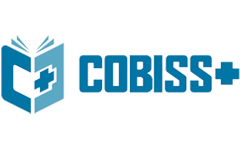Sharing Time Learning (Face to Face and Online Learning) in Blended Learning
DOI:
https://doi.org/10.61841/2fmzvd57Keywords:
blended learning, learning effectiveness, the percentage of instructional timeAbstract
Blended learning is a combination of learning face to face (f2f) with online learning, because it is a merger of two methods, automatically a teacher should be able to devote time to both of the learning method to increase learning outcomes. This research was conducted with the aim to (1) seek timely manner between the percentage of blended learning and face to face (f2f) in order to achieve an increase in maximum learning results and (2) look at the effectiveness of blended learning. Research method that being used is experimental method performed using 2 different percentage of instructional time. Class A and B using the percentage of time 60% online learning and 40% f2f, while class C and Dusing the percentage of time 75% online learning and 25% f2f. Conclusions of this study were (1) lecture and students agree with blended learning teaching methods and stated that this method is quite effective, (2) the composition of the time yet to get the learning outcomes as expected, but the learning outcomes of students studying with the composition 60% online and 40% f2f slightly better than students who studied the composition of the time 75% online and 25%f2f
Downloads
References
1. Allen, EI., Seaman, J., & Garret, R. (2007). Blending in the Extent and Promise of Blended Education in the United States. Sloan-C™. United State of America.
2. Azis, Y.M. (2011). The Effectiveness of B-Learning (Individuals vs. Groups), Achievement Motivation, Learning Styles on Learning Outcomes in Mathematics Courses. Prosiding Sentia 3, H-64, ISSN2085-2347.http://www.:sentia.polinema.ac.id/wpcontent/.../2011/H/H12.pdf
3. Azis, Y.M. (2013). The Effectiveness of Blended learning, Prior Knowledge to the Understanding Concept in Economics. Educational Research International (ERint). Volume 02 No. 02, Oktober 2013, ISSN: 2307-3713L, ISSN: 2307–3721Print.http://erint.savap.org.pk/vol2n2.html
4. Bolliger, D & Martindale, T. (2008). Students Satisfaction an Online Master‟s Degree Program in Instructional Technology. Journal of Interactive Instruction, III – p.24.http://eric.ed.gov/?id=EJ635483
5. McGinnis, M. (2005). Building A Successful Blended learning Strategy. Retrieved from http:// www.ltimagazine.com/ltimagazin
6. Redding, T.R.,& Ro tzien, J. (2008). Comparative Analysis on Online Learning vs Classroom Learning. Journal of Interactive Instruction Development, 3 124.http://eric.ed.gov/?id=EJ635483
7. Semler, S. (2005). Use Blended learning to Increase Learner Engagement and Reduce Training Cost. Retrieved from http://www.learningsim.com/content/lsnews/blended_learning1.html
Downloads
Published
Issue
Section
License
Copyright (c) 2020 AUTHOR

This work is licensed under a Creative Commons Attribution 4.0 International License.
You are free to:
- Share — copy and redistribute the material in any medium or format for any purpose, even commercially.
- Adapt — remix, transform, and build upon the material for any purpose, even commercially.
- The licensor cannot revoke these freedoms as long as you follow the license terms.
Under the following terms:
- Attribution — You must give appropriate credit , provide a link to the license, and indicate if changes were made . You may do so in any reasonable manner, but not in any way that suggests the licensor endorses you or your use.
- No additional restrictions — You may not apply legal terms or technological measures that legally restrict others from doing anything the license permits.
Notices:
You do not have to comply with the license for elements of the material in the public domain or where your use is permitted by an applicable exception or limitation .
No warranties are given. The license may not give you all of the permissions necessary for your intended use. For example, other rights such as publicity, privacy, or moral rights may limit how you use the material.
















